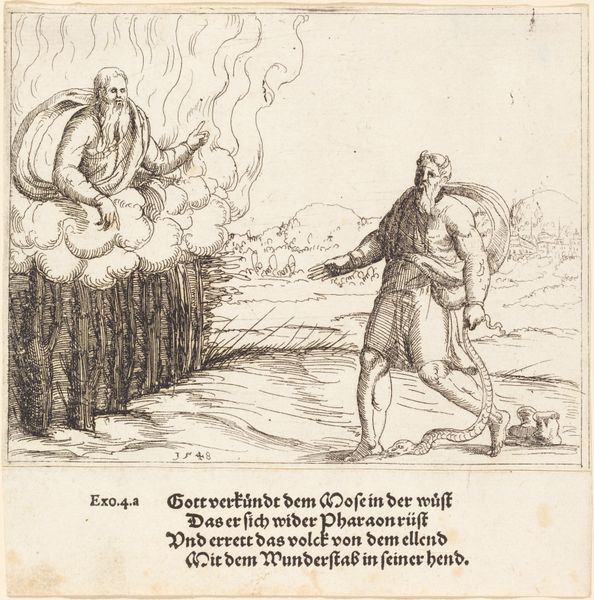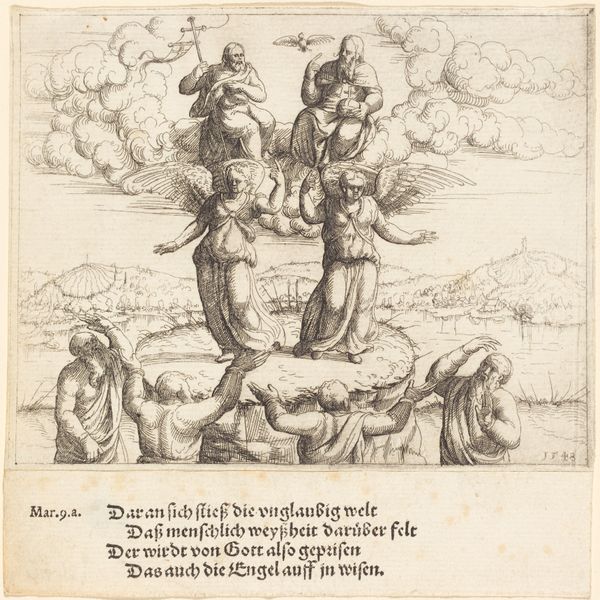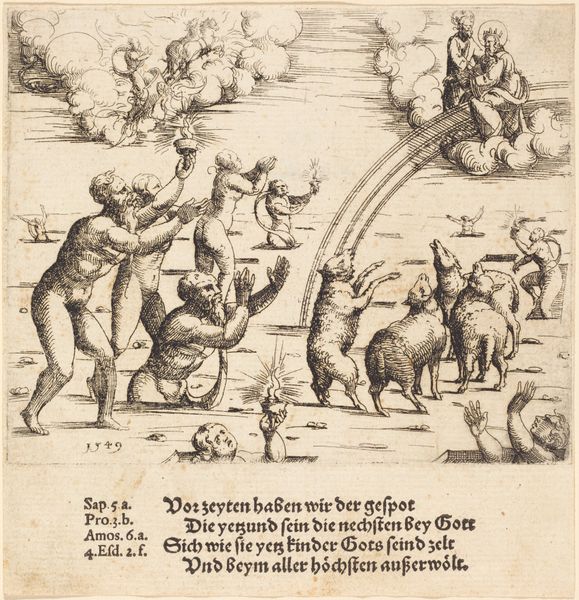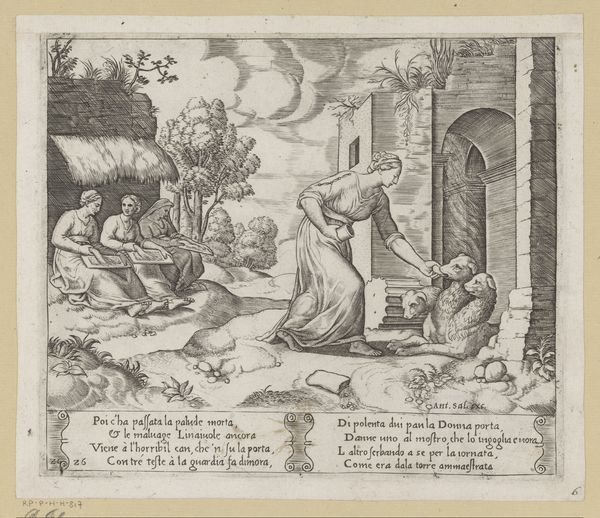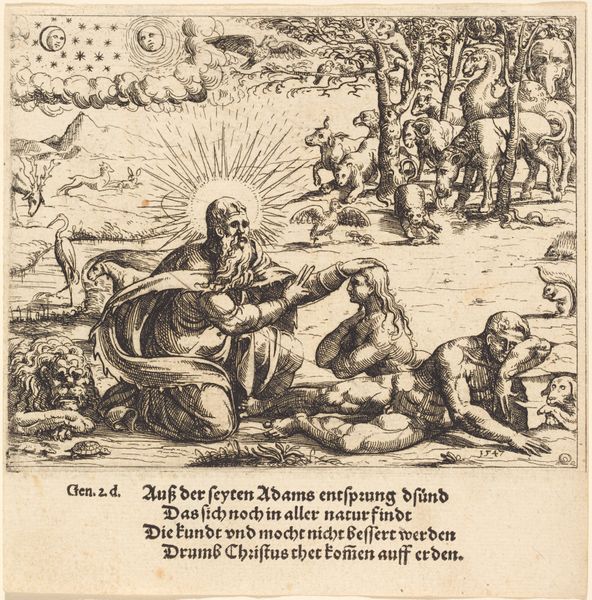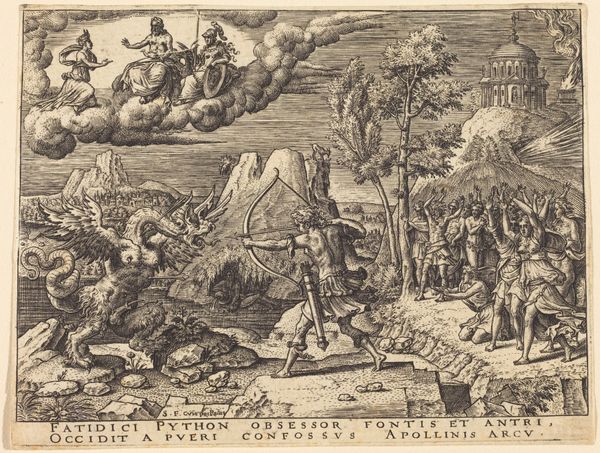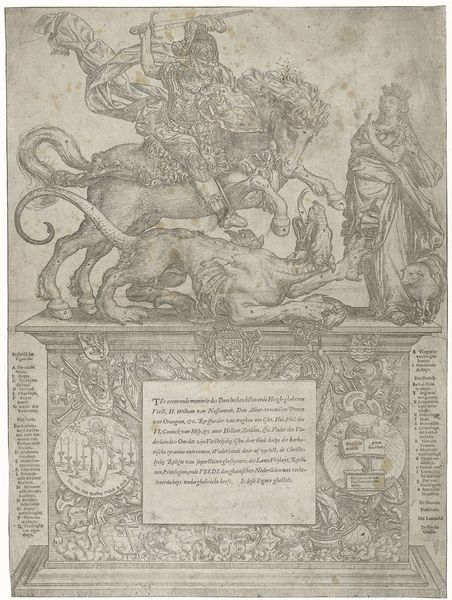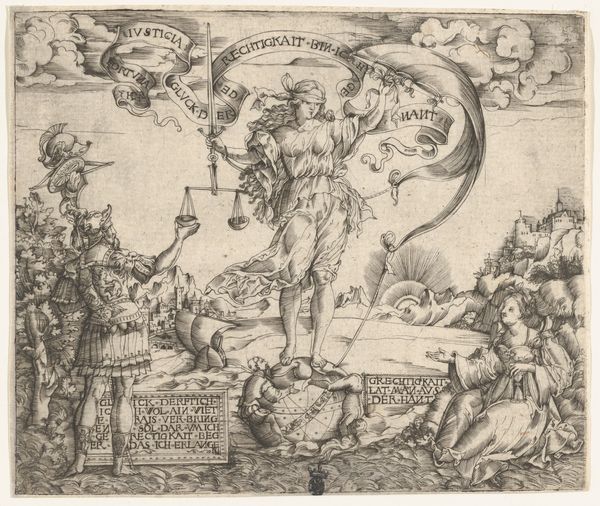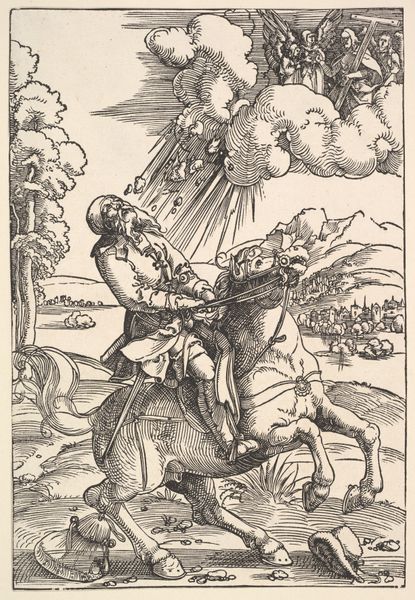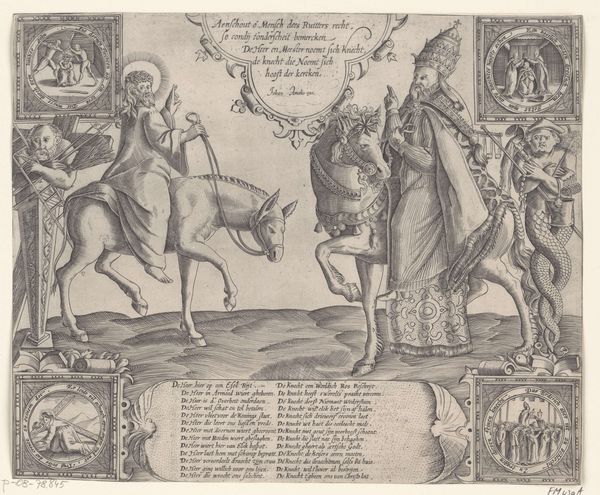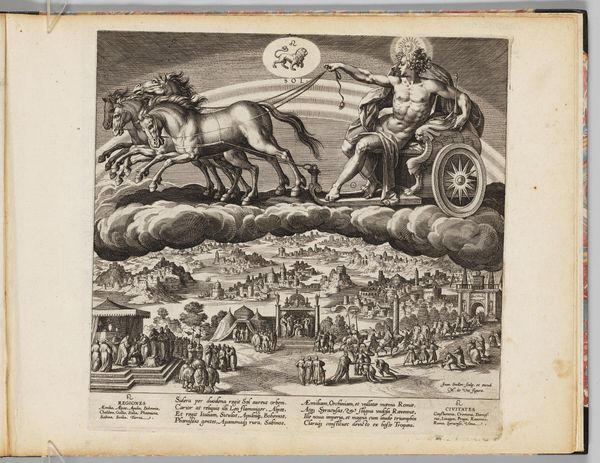
drawing, print, ink, engraving
#
drawing
# print
#
figuration
#
ink
#
history-painting
#
northern-renaissance
#
engraving
Copyright: National Gallery of Art: CC0 1.0
Curator: Look at the incredible detail in this engraving, "Elijah is Taken up to Heaven" by Augustin Hirschvogel, dated 1547. It’s a rather small print, executed in ink, but teeming with activity. Editor: The immediate impression is fiery and dramatic! There's a real sense of awe and almost terror emanating from that kneeling figure. Curator: Indeed. Let's consider the printmaking process itself. Hirschvogel meticulously cut lines into a metal plate, allowing for the creation of multiple impressions, each one becoming a vehicle for disseminating this potent biblical story. This print could circulate widely, its material form integral to the spread of religious and cultural ideas during the Northern Renaissance. Editor: Absolutely, and the choice of this narrative – Elijah's ascent – speaks to notions of power, legacy, and divine intervention. This image emphasizes the relationship between the figures in the narrative—and the potential impact or calling that might have resonated deeply within the cultural anxieties of the era. The dynamic rendering of Elijah’s departure is also telling of the values and desires in play at the time of this work’s creation. Curator: Notice how the linear quality, so typical of engraving, defines form. It's a functional, labor-intensive process and medium, of course. But its very graphic nature—this direct translation from hand to printed image—has its own inherent drama here, reinforcing the explosive scene. Even the German text beneath emphasizes proclamation. Editor: The flames consume and yet seem stylized, tamed perhaps by the printmaking technique. It brings an interesting tension: the chaotic event tempered by controlled, meticulous labor, hinting at broader ideas around faith. I’m interested to reflect more on how it plays with concepts of leadership, of passing on power at this transitional historical moment. Curator: And consider its circulation: each print is an object to be handled, viewed, perhaps owned, thus embedding the biblical narrative within the daily lives of ordinary people. The act of consumption and material ownership adds layers of meaning, further intertwining the religious with the societal and economic. Editor: Right, its reproduction makes this sacred narrative readily available. This artwork enables discourse surrounding how power is both seized and conceded as well as how one negotiates earthly authority. Curator: A compact, powerful testament to the possibilities embedded within both the materials and context. Editor: Precisely, it serves as a historical, social and artistic commentary.
Comments
No comments
Be the first to comment and join the conversation on the ultimate creative platform.
